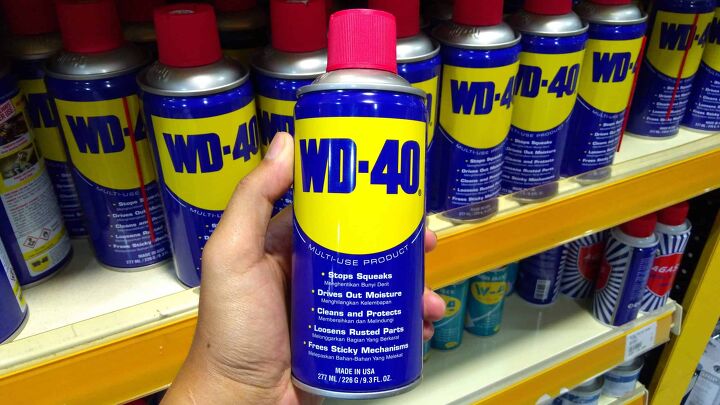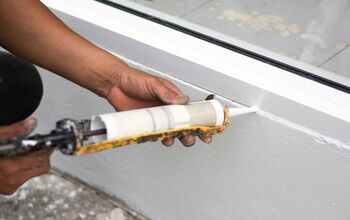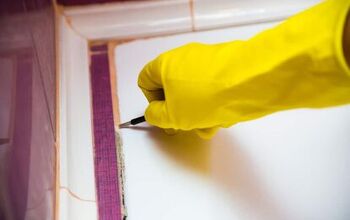Does WD 40 Remove Silicone Sealant?

A silicone sealant, also known as caulk, is used to provide a waterproof seal between bathtub or shower and the wall that it adjoins. Without that waterproof seal, moisture can get into the gaps and lead to mold growth if left unattended.
If you are wondering whether WD-40 can remove silicone sealant, the short answer is yes. WD-40 is effective at fully removing silicon sealant, which is necessary if you are planning to apply new caulk onto a surface. Make sure to remove any sealant residue or the WD-40 may have a negative reaction with the new caulk.
What is Silicon Sealant?
Silicone sealant, or more commonly referred to as “caulk,” is a type of liquid adhesive. When compared to other organic polymer-based glues, it has a unique chemical formulation and looks, acts, and feels similar to a gel.
Unlike other adhesives on the market, silicone has the ability to maintain its durability and elasticity in both low and high temperatures. Silicone sealant is also resistant to moisture, other chemicals, and weathering. Because of this, it is the ideal choice to use when repairing or building particular objects.
Why is Silicone Sealant So Tough to Get Up?
There’s actually some chemistry behind silicone caulk and why it is so strong and durable. The base is made up of oxygen and silicone, forming a strong backbone that is known as siloxane polymer. This is combine together with other elements like hydrogen and carbon to create a matrix.
There are other elements that can combine together with the aforementioned siloxane polymer, since silicone can actually be processed in either liquid or solid form. When those elements cross (at the curing process), it can’t be undone.
In fact, silicon sealants are one of the very few adhesives that must cure. Once it is completely dry, it has a very strong adhesive bond that is especially difficult to break. Although silicon sealant can last for many years, eventually it will wear out.
How to Remove Silicone Sealant with WD-40
Although WD-40 is effective at removing silicon sealant, it should be completely cleaned off the surface prior to applying new caulk. Otherwise, the WD-40 and the new sealant can have a negative reaction. Regardless, follow the steps outlined below to safely and effectively remove silicon sealant with WD-40:
Step One: Clean Thoroughly
To start, you’ll need some protective gloves, a cutting knife of some sort, and your WD-40. Begin by cleaning the area thoroughly. Take your time to ensure that it is as clean as it possibly can be and give it time to adequately dry.
Step Two: Spray and Pull
Next, use the smart straw that is attached to the can of WD-40 to properly coat the corner of the sealant with WD-40. Make sure to give it a good, through dousing to ensure that the WD-40 will seep beneath the surface of the sealant.
After soaking the sealant properly, you’ll need to use the knife to pull up the silicone. This can vary on the type of silicone and the age; silicone that has been sitting there for a long time can be difficult to get up and it may take a couple of tries.
Grab the silicone where you pulled it up with the knife and gently begin to peel it away. If you’re lucky, the entire strip of silicone will come up in one motion. Don’t be surprised if it rips and you have to use your knife to chip part of it back up for grabbing.
Step Three: Clean Again
When you’ve successfully pulled up all of the silicone sealant, it is time to clean again. The surface needs to be absolutely clean so that the new sealant can adhere. If there is dirt, debris, or old sealant underneath, the new sealant may not properly adhere.
There may also be residue leftover from the WD-40. Wipe all of this away as well to ensure the cleanest, smoothest possible area. You can even clean your shower doors with WD-40.
Using a Solvent Digests the Silicone
While it may seem like a silicone solvent is breaking down the silicone, what is happening is that the solvent is actually digesting the silicone. When that solvent dissolves a solute, that solute is broken down into small pieces that will eventually disperse into the solvent.
So, technically speaking, this is more of a digestion than it would be dissolving. Think of it like fats in water: the silicone will emulsify. However you shake it, it makes for an effective means to get those old silicone sealants off the wall.
Try Caulk Remover
If you don’t have any WD-40 laying around the house, you will need to get a solvent to soften the silicone sealant or one that is meant specifically for the removal of silicone caulk. Generally speaking, you only want to remove old caulk after years of wear and tear have impacted the strength of the silicone caulk.
Again, there is nothing that will dissolve the caulk, they simply break it down and weaken it. Using a caulk remover to soften up the caulk so that it can be removed is the best avenue to pursue. No matter what you do, you will need some kind of scraper to pull the softened caulk up.
Softening Agents
There are household items that can definitely soften up the caulk enough that it can be removed. In fact, mineral spirits is likely one you may already have around your house. For very hard surfaces like concrete, tile, and marble, mineral spirits is the best option.
Whereas, isopropyl alcohol should be used for getting silicone off of painted or plastic surfaces to ensure that the surface will not be harmed. Regular rubbing alcohol for home use may not be strong enough to be effective. Instead, opt for an industrial-grade isopropyl alcohol with purity at 99 percent.
There are other solvent options like xylene and toluene as well. Just make sure that whatever softening agent that you choose, it is compatible with the surface in question. Test the solvent you plan on using in an inconspicuous area first to ensure that it won’t cause any harm. The last thing you want is to get the caulk off only to damage the surface underneath.
As always, read the manufacturer’s instructions and warnings carefully, and establish proper ventilation when working with solvents. For a more natural removal solution, you can try white vinegar. While it may not work as well as alcohol or mineral spirits, it poses little threat to the surface you are removing the caulk from.
Getting Rid of Stubborn Caulk
There are generally only two solutions for getting rid of particularly tough caulk on a surface. The first is that you can repeatedly apply the solvent and attempt to scrape it up after the solvent has had a chance to soak in.
The second solution is that you can soak a rag and drape it over the caulk. After allowing for some time to soften the sealant, make sure to cut as close as possible to the substrate. Use a sharp knife as you are pulling the bead. This is the most effective way to get rid of the bulk of the caulk and should only leave a thin layer of residue behind.
Getting Rid of the Residue
Don’t forget that the residue of the caulk can also prevent the new caulk from adhering. It must be removed before proceeding to the next step, otherwise you may wind up with caulk that doesn’t stick to the surface the way that it is supposed to.
Do not use an abrasive pad or sandpaper. Using something abrasive can scratch or damage the surface behind, creating damage that needs to be repaired or replaced before moving forward. To effectively get rid of the residue, you should soak the residue using something like vinegar, alcohol, or mineral spirits.
Using those liquids will allow for further soaking, weakening the residue even further. Use your knife or scraper to then pull up the leftover residue as you go. Keep going with this method so that you can properly remove all of the residue left.
Does Goo Gone Work?
Goo Gone is a brand of cleaner that has proven to be effective at getting up tough stains off of hands. Using it to remove the silicone sealant will not remove the sealant right away but frequent usage can break down the caulk enough that it will eventually come up.
Dealing with Mildew Under Silicone
When removing the old silicone, you may come to an unhappy realization: there is mildew underneath the silicone. Getting rid of the mildew then becomes the most important aspect of removal.
You can use chlorine bleach to get rid of those mildew stains. Use wads of toilet paper that are dampened with bleach against the areas impacted by mildew. This will break down the mildew and make it much easier to clean off of the impacted surface.
Wrapping Up
Whatever you do, it is important to ensure that the entire portion of caulk and residue have been effectively cleaned. Leaving silicone sealant or residue can result in a less-than-flat surface, inhibiting the sealing ability of the new silicone.
More Related Guides

Ryan Womeldorf has more than a decade of experience writing. He loves to blog about construction, plumbing, and other home topics. Ryan also loves hockey and a lifelong Buffalo sports fan.
More by Ryan Womeldorf













![The 10 Best Table Saws - [2022 Reviews & Buyer's Guide]](https://cdn-fastly.upgradedhome.com/media/2023/07/31/9070645/the-10-best-table-saws-2022-reviews-buyer-s-guide.jpg?size=350x220)













